Battery test systems for R&D and production
Products
Our test systems are modular, expandable, and include many functions beyond the state of the art.
Our test systems are developed and manufactured in Germany and are designed for a long lifetime and high reliability.
Battery Test Systems
Test Systems: Cells Tester, Module Tester and Pack Tester.
Accessories
Accessories and options, as safety systems, data logger and cell holders.
Test Systems for Research, Development and Production
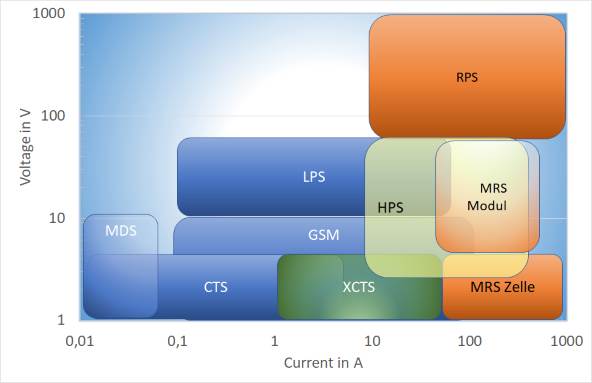
Overview of our test systems by voltage and current range
The figure shows the voltage and current ranges of the different battery test system series. XCTS, MRS and RPS are based on switched power supply amplifiers, resulting in a high energy efficiency and low heat generation.
Cell Test System (CTS):
The CTS test systems are designed for single cell tests with voltages up to 6V and currents up to 5A (20A in parallel operation). The very compact design allows a standard table top system with 32 independent test channels. Each channel has an additional input for the cell temperature. The automatic dynamic range switching gives up to 200nA precision at low current.


XCTS: Extended Cell Test System
The test systems of the XCTS series are designed for single cells with a maximum voltage of 6 V and currents up to 40, 60 or 80A. The amplifiers use switched technology which results in low heat generation, compact design and high overall energy efficiency. In parallel mode (optional) up to 400A can be reached. The XCTS has automatic and dynamic current range switching.
MDS and GSM Series
The MDS and the GSM series are designed for special applications. The MDS series is for voltages between -10 V to +10 V at currents up to 25 mA. The GSM series is for voltages between -0.5 V and + 10 V at currents up to 40A.
Compared to the CTS/XCTS which are only available in few fixed configurations with few possible options the MDS/GSM can be configured individually regarding current and voltage range and options. In contrast to the CTS/XCTS both offer analog voltage control. The MDS may have lower leak currents than the CTS, the GSM faster rise times.
The MDS and the GSM are recommended for special applications therefore while the CTS/XCTS are for all other applications because of their lower price and automatic dynamic current ranges.

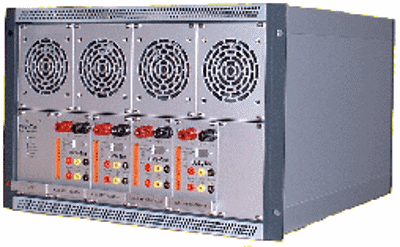
LPS: Test Systems with small Power
Systems of the LPS series are customized designed in voltage and current range. The linear amplifier can work up to 70 V and 60 A. Additionally each test channel can be equipped with up to 4 auxiliary inputs according to your requirements (for example 2 * PT 100 and 2 * voltage).
MRS: Cell Test System for very high Currents
The MRS cell test system is designed for up to 1000A (2400A in parallel mode). The switched mode design of the amplifier results in a high efficiency, low heat generation and compact design.
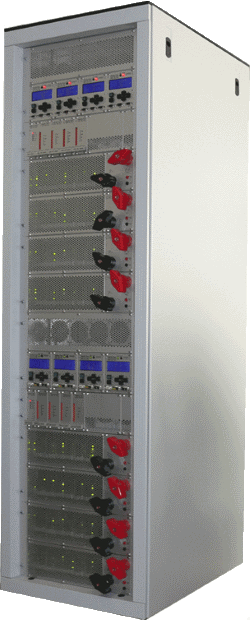
HPS: Test Systems for high Power
Test systems of the HPS series are based on a highly modular amplifier design. Voltage and currents can be adapted to your requirements. Currents up to 600 A, voltages up to 70 V and a maximum power of 6 KW are possible for a single channel. Additionally the power and current can be increased by parallel connection of up to 4 Channels (Up to 2400 A). As an option there are up to three current ranges for one channel possible and an independent battery safety device (BSD) can be integrated in the test system.
MRS Module Test System
The MRS module test system is designed for voltages of 70 V and fits the typical module size. Maximum currents are customized between 70 A and 540 A. The switched mode amplifier results in low heat generation and high energy efficiency. This also reduces the energy demand for cooling of the battery laboratory.


RPS: Battery Pack Tester
The RPS Battery Pack tester is for voltages up to 1000 V and currents up to 1000 A and a maximum power of 500 kW. A Battery safety (BSD) is integrated in the system and many additional options are possible.
Options and Accessories
CMU: Cell Monitoring Unit
The Cell Monitoring Unit is a data acquisition system for up to 480 voltages and/or temperatures of cells and modules. The data acquisition is synchronized with the data measured by the connected test system, are stored in the same data file and can be used to control a test. The signals of the CMU can be distributed between different test channels.

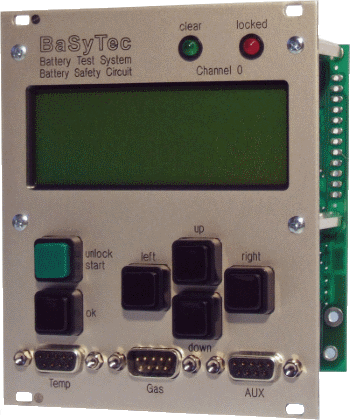
BSD: Battery Safety Device
The BSD is an independent measuring system that is continuously measuring the battery sigals (voltage, temperature). If one of the signals leave the threshold values, the test is stopped in a controlled way and the battery is disconnected from the test system. The BSD can detect safety critical situations an damage of the device under test can be avoided. Additionally the signals of the BSD can be used in the test schedule and registering of them is possible, too.
Battery Holder
We offer a wide variety of contacting systems for cells of different sizes. This systems give a reproducible connection between the battery and the cable.
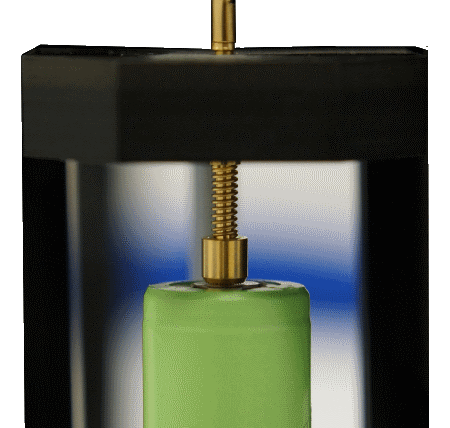
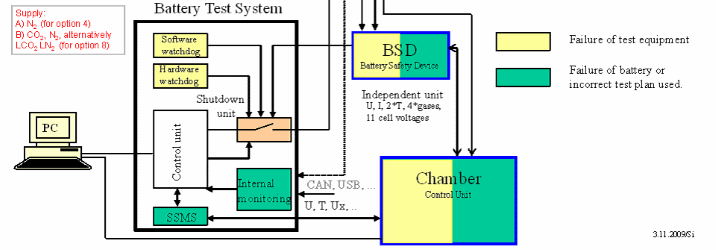
SSMS: Superior Safety Monitoring System Interface
The SSMS is an interface for a multilevel safety concept including nitrogen flooded test chambers.
Client Server Database Module
The client server database module allows to mirror all data of several test systems on a central database (MS SQL). The data backup can also be reached from other computers in the network and data analyzing with other tools (simulation software or spreadsheet software) can be done.


EIS: Electrochemical Impedance Spectroscopy
The EIS is a method for:
– determining the structure and parameters of battery models
– Investigating electrochemical reactions
– Determination of the battery state of charge
– Determination of the battery state of health
